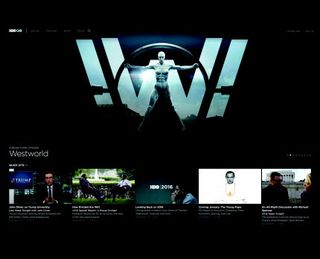New Normal: Digital Distribution

Related > Viewer Watch 2017: Download the Complete Report
With new business models proliferating almost as fast as new consumer-electronics devices at this year’s CES, TV executives are recalling 2016 as a year of landmark changes that will produce even more profound developments in 2017.
“In the last year, there has been more change in the video business than we saw in probably the past five years,” said Matthew Strauss, executive vice president and general manager of video and entertainment services for Comcast Cable. “We’re just continuing to find the competitive landscape shifting. There are more services being delivered over the top to consumers. There is the growth and proliferation of Internet-connected TV devices like Roku, Apple TV or Amazon Fire. And you are also seeing new services that are delivering bundled over the top channels like Sling TV, Sony’s PlayStation Vue and DirecTV Now.”
In response, programmers and operators have introduced a flurry of new products. “In terms of video, this has been one of the biggest for Cox in all the years I’ve been here,” Steve Necessary, executive vice president of product development and management at Cox Communications, said.
Less obviously, operators and programmers continue to make massive investments in their technology infrastructures with important implications for their offerings in 2017 and beyond.
“As a company, we are investing and positioning content to be consumed on more and more platforms every day,” Discovery Communications chief technology officer John Honeycutt said, stressing that the programmer is rapidly deploying new cloud and software-based infrastructures so it can adapt to consumer needs and quickly roll out new services. “We are in the middle of a revolution in our supply chain.”
Related: Old Controversies and New Businesses
Multichannel Newsletter
The smarter way to stay on top of the multichannel video marketplace. Sign up below.
DIGITAL-FIRST REALITY
Much of this reflects longstanding changes in consumer behavior and the underlying economics of the TV, digital and media industries.
Vincent Letang, executive vice president of global market intelligence at Magna, said 2016 was the first year digital advertising exceeded total TV advertising in the U.S., garnering 39% of the total ad spend versus 37.4% for TV. Digital advertising is set to exceed total TV advertising worldwide for the first time in 2017, he added.
“We are forecasting that in five years, digital will grow to 56.0% of total advertising [in 2021 in the U.S.] while TV will plateau at 29.9%,” he said. Meanwhile, content creators and distributors are following the flow of money into digital media, fueling rapid growth in consumption of TV shows on mobile devices, computers and TVs connected to the Internet.
“The cliché of how consumers ‘want my content when I want it, where I want it and how I want it,’ is now a truism,” Mike Vorhaus, president of Magid Advisors at Frank N. Magid Associates, said. “Just five years ago, it was hard to find a lot of content. But now, in 2017, I’m really the captain of my media ship in a way that was not true in the past.”
Given ongoing rapid growth in the usage of mobile and connected TVs, it is difficult to call digital video “mature.” But researchers stress that the tectonic changes in how video is consumed and delivered have already made digital media a central part of the TV business.
“After four or five years of talking about alternative ways to access video and watching significant growth in its usage, we are now at a point where it is pretty much established,” Howard Horowitz, president and founder of Horowitz Research, said. “It’s not a fly in the ointment, but part of the business. Digital self-managed access to video content is with us and mostly that is a good thing for all the players.”
DISRUPTIVE GAINS
Others agree. After ticking off a long list of new products and initiatives designed to realign their offerings with newer consumer behavior, Comcast’s Strauss said: “Our third-quarter video results were the best we’ve had in 10 years. We added 32,000 video customers, which is an 80,000 improvement year over year. And if you look at the last 12 months, we are video-positive.”
Some programmers have been buffeted by the changes, which have hurt ratings, but those that have aggressively moved to capitalize on the newer delivery platforms are pleased with the results.
Bernadette Aulestia, executive vice president of worldwide distribution for HBO, noted that the launch of the OTT service HBO Now has allowed the programmer to tap into new markets and see healthy growth in the overall business. “Less than 1% of [the OTT] HBO Now subscribers are coming from our linear multichannel subscribers,” she said.
Executives from Dish Network and AT&T cited similar experiences with their respective OTT channel bundles, Sling TV and DirecTV Now, which are designed in part to tap into viewers outside of the pay TV ecosystem.
“There are about 20 million households in the U.S. that are either not engaged with pay TV or have opted to leave the pay TV ecosystems,” Tony Goncalves, senior vice president of strategy and business development for AT&T Entertainment Group, said.
That doesn’t mean that the industry can sit back and pretend it will be business as usual in 2017.
An acceleration in the decline in pay TV subscribers has caused Magna to revise its estimates of pay TV subscribers downward. There is also a great deal of uncertainty about the ad market.
These trends raise important questions about the changing use of video on various platforms — traditional TV, mobile, Internet-connected TVs, set-top boxes and other technologies. How these trends will impact the health of the industry and the kind of products that get launched in 2017 is the subject of the next story.
